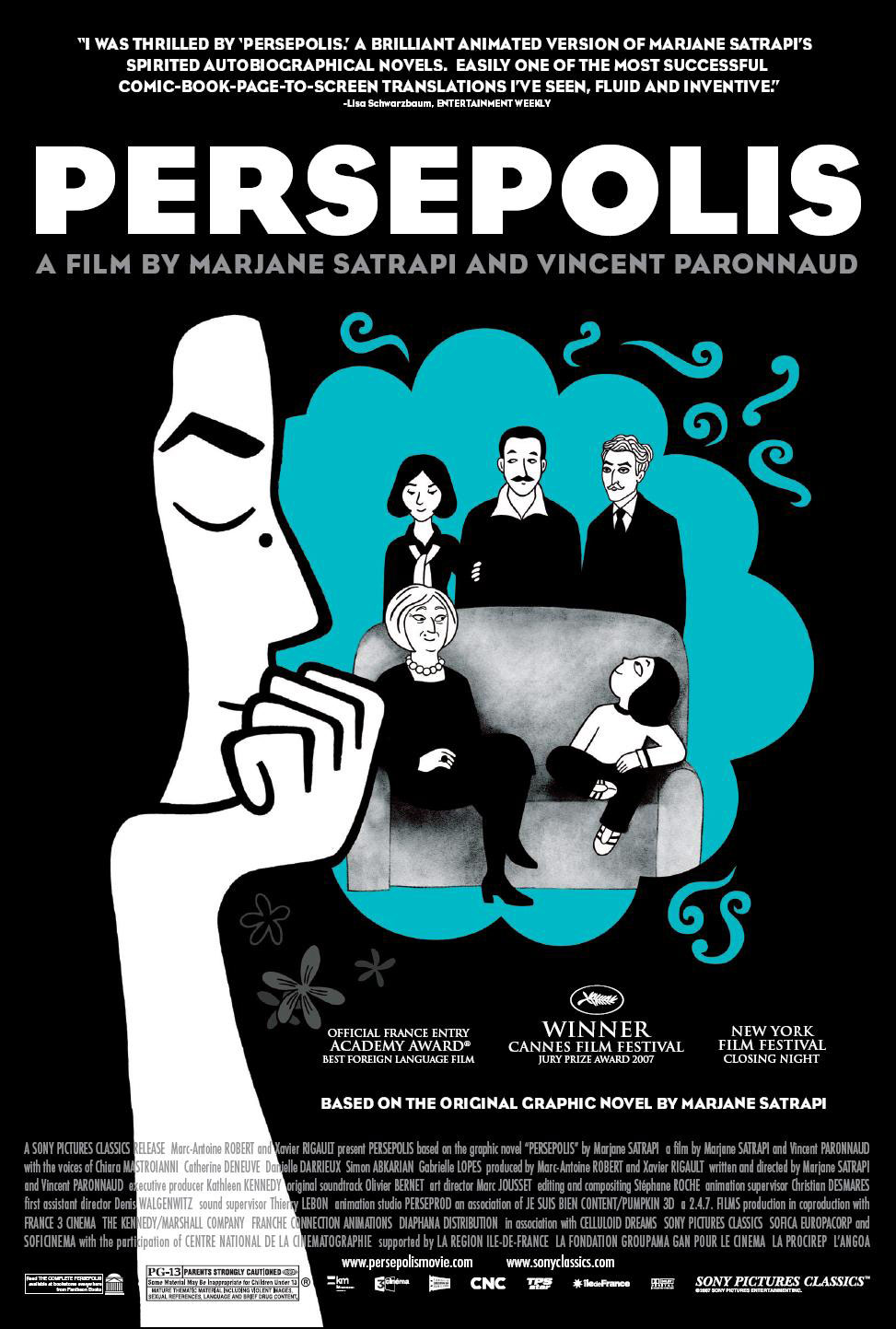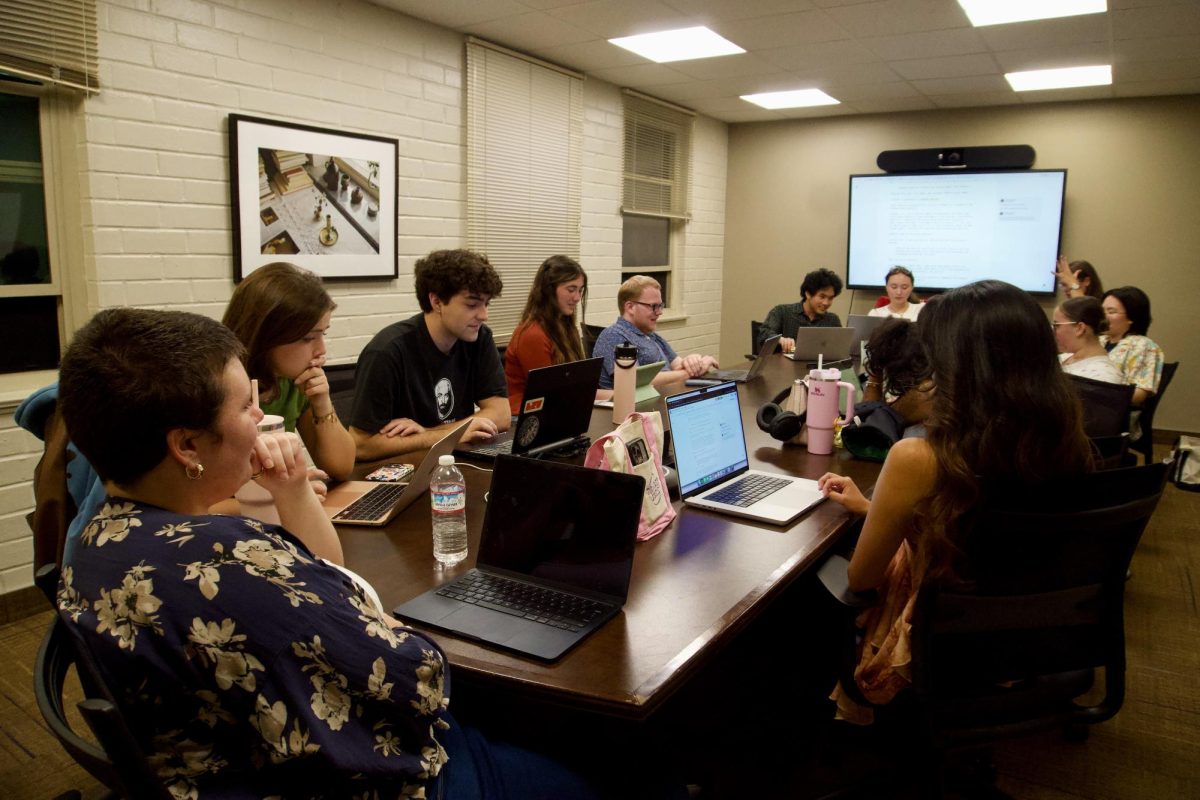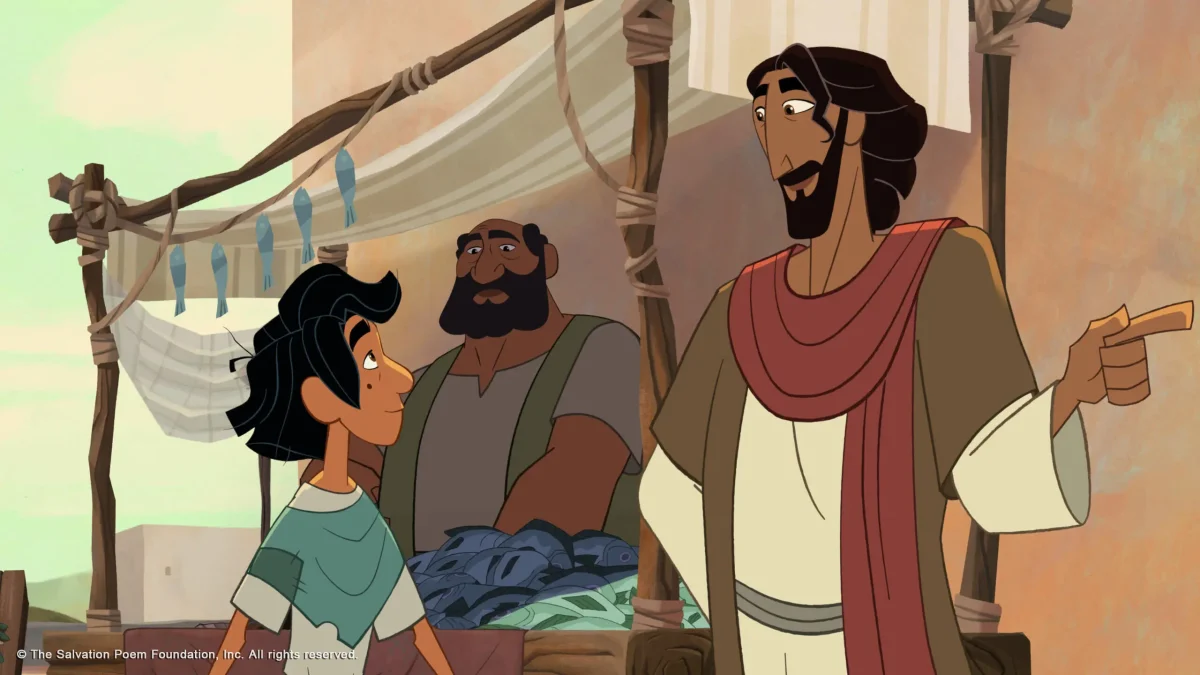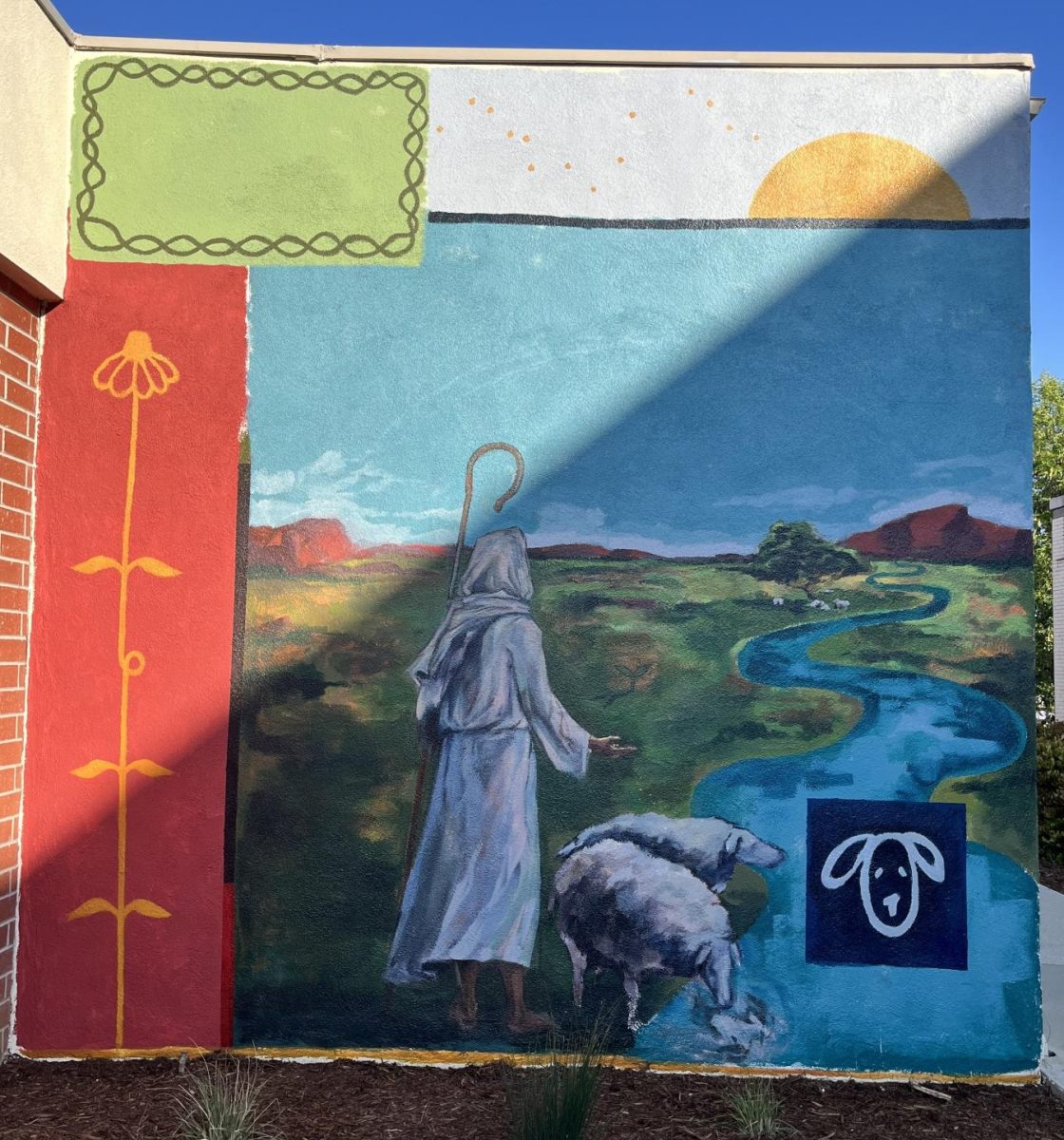“Persepolis” was one of the best reviewed films of last year, picking up the Jury Prize at the Cannes Film Festival and numerous nominations during awards season. Its recognition might not be over either, as some believe it might pull off an upset on Oscar night and beat out “Ratatouille” for Best Animated Feature.
Based on Marjane Satrapi’s autobiographical graphic novel, the French film picks up in Iran in 1979 in the midst of the Islamic Revolution. The 9-year-old Marjane witnesses the tyrannical government’s rise to power and the harsh rules it imposes on its people, especially the women. Soon thereafter, the country is thrust into the long running Iran-Iraq War, which forces her to move to Austria for safety’s sake. It takes a while for her to fit in there, and a new series of problems aren’t far behind. Homesick, she moves back to Iran only to discover she can no longer take living in such an oppressed society.
Cut from the same cloth as last year’s Juno MacGuff (of the Oscar-nominated “Juno”), Marjane is a rebellious anti-heroine who never shies away from speaking her mind. Whether refusing to wear her mandated veil, lying to soldiers to get other people in trouble or listening to the forbidden music of Iron Maiden, she is a fish out of water searching for a place to belong.
In much the same way “Sin City” and “300” turned Frank Miller’s graphic novels into live action epics, “Persepolis” translates its unique source to a 2-D backdrop. While the animation isn’t intricately detailed, the way it presents itself shows great creativity. Jumping around in both time and setting, it almost suggests a move from panel to panel. With its camera movements and shot selection, the film — almost entirely black and white — also displays a rogue imagination that refuses to pull punches.
While the film does hit a few speed bumps along the way and lacks a strong ending, Marjane’s story is a remarkable one. The real life Satrapi, who served as writer and co-director, does quite a job of putting her story up on the big screen in her first film project. While it might not reach the high level of “Ratatouille” — which was, after all, the best reviewed wide release of the entire year — it still shows that animation isn’t solely for kids and fairy tales.







